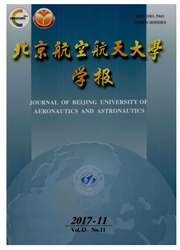

 中文摘要:
中文摘要:
中低频InSAR会受到背景电离层色散相位和法拉第旋转效应的影响,进而降低干涉SAR数据的相干性,以及相对高程测量的精度。从背景电离层引入的色散相位和法拉第旋转效应出发,重点分析和推导了背景电离层引入的干涉相位误差、去相干以及由此引起的相对测高误差,并通过选定合适的系统参数模拟了在典型系统参数条件和给定的电离层状态下引入的相对测高误差。实验结果表明,电离层不仅会降低数据的相干性,而且会给相对测高带来较大的误差。为了使P波段InSAR系统相对测高精度达到4m以内(如InSAR测树高等应用),在典型的电离层条件(50TECU)下,差分TEC校正精度应达到0.01TECU以内。
 英文摘要:
英文摘要:
Low-frequency interferometric synthetic aperture radar(InSAR)systems are affected by the dispersive phase and Faraday rotation(FR)due to the background ionosphere,which reduces the coherence of the InSAR data and the accuracy of the relative height measurement.Beginning with the dispersive phase and the FR effect,we focus on the analysis and derivation of the interferometric phase error and decorrelation due to the background ionosphere and thus the relative height error.Given the reference system that is similar to both ALOS/PALSAR-2and BIOMASS systems,the relative height error caused by the background ionosphere is calculated for the typical ionospheric conditions with appropriate system parameters.The simulation results show that,the background ionosphere not only reduces the coherence of SAR data but also introduces larger relative height error.Meanwhile,the reference is shown for the calibration accuracy of the differential total electron density(TEC).To ensure that the relative height measurement accuracy for the P-band InSAR system achieves within 4m,the differential TEC calibration should be less than 0.01 TECU.
 同期刊论文项目
同期刊论文项目
 同项目期刊论文
同项目期刊论文
 期刊信息
期刊信息
